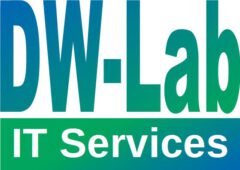This blog was first published on Service Management 360 on 13-Aug-2013.
http://www.servicemanagement360.com/2013/08/13/is-it-monitoring-for-large-businesses-only/
Could you imagine any large company leaving their IT systems unmanaged? I can’t.
These major companies have dedicated departments in place, responsible for monitoring IT system availability and performance. They are in charge of detecting issues before the business processes are affected. They also have to measure the fulfillment of service level agreements and deliver input for capacity planning on IT resources. Often they have to provide metrics to bill delivered services to the different business units.
Repeatable processes are in place to deliver these services:
-
Sense
First you must sense the user experience or the service quality (like sending email). If problems are detected go to phase 2. -
Isolate
In multiple tier architecture application environments the isolation of the problem source is the key factor for a quick problem resolution. By having all resources under control and having transaction tracking mechanisms in place, you can quickly identify the failing resource. -
Diagnose
After you identified the bottleneck, you need to perform a detailed diagnosis. You must investigate the system and its applications and make the right conclusions. -
Take action
With the results from the previous step, you can then take the required actions. -
Evaluate
By doing a re-evaluation you go back to step 1 and make sure that the alerted situation no longer exists and the applied action was successful.
The frequent measurement of key metrics is also used to earn data for historical analysis. Service-level measurement and capacity planning become actionable with this data.
And what about small and medium businesses?
Here I often see very limited attention given to system monitoring. In small and medium businesses often a kind of system availability monitoring with a very limited scope is performed. In some cases, the sensibility for that IT discipline doesn’t exist at all.
But what does it mean if IT systems are not available? Today, most kinds of businesses rely on IT services somehow. Any production facility, medical service, office, modern garage and so on is almost incapacitated when the IT systems are down. That means that staff can’t perform their core business roles, can’t earn money, can’t provide the services to their customers. This leads to a massive loss of revenue and reputation.
Additionally, a lot of these small and medium businesses are suppliers in a just-in-time supply chain for the large businesses (for example, a car manufacturer) and penalties apply if the delivery and production process is interrupted.
So the need for enterprise class monitoring systems exists. But why don’t they do it?
-
It is too expensive!
-
It is too complex!
-
It is too time consuming!
These are the three favorite reasons I often hear. And all of them are partially true. Monitoring is a very special subject matter expert discipline. It requires detailed understanding of the monitored systems, applications and services as well as knowledge of the monitoring product used.
The purchase of an enterprise-class monitoring system might require a huge amount of money and a remarkable education effort. And it requires a kind of sustainability small IT departments can’t dedicate to monitoring. Monitoring requires repeated reviews to enhance quality, but it is not possible to keep two or three persons focused on monitoring questions because the workload for this discipline is not high enough in a small IT department and they have responsibility for lot of other things. In consequence, the skill level for this discipline declines and the results no longer justify the investment in enterprise-class monitoring.
So what now?
Is the answer “yes” on my initial question? No, it isn’t. A new delivery model is required. Enterprise-class monitoring is needed in all businesses relying on stable IT services.
The answer might be a Monitoring as a Service model. A trusted service provider could deliver such a monitoring service and overcome the above inhibitors. Because he delivers this service to multiple clients he can lower the ramp up costs for the software purchase, offer the required sustainability and bring in the expertise for monitoring systems, applications and services.
In my blog series “Monitoring as a Service” (see parts 1, 2, 3 and 4) I described a business model for using IBM monitoring solutions to set up such a service.
IBM SmartCloud Application Performance Management offers a suite of products to cover the above described five-step monitoring process, including reporting features for historical reviews and projections to the future.
So what is your impression? Are we covering the right markets? How could we enhance? Please share your thoughts below.
